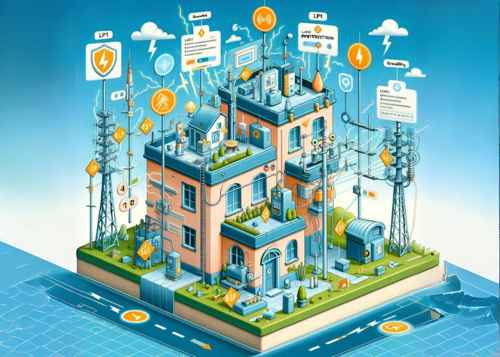Protection against the direct or indirect effects of lightning is characterized by its level of protection which corresponds to a given effectiveness in relation to the acceptable risk. In other words, it is the expected effectiveness of the protection.
There are 4 levels of protection according to NF EN 62305-3:2006-12 (level I, II, III and IV). Level I is the highest security level.
Why do we calculate the level of protection?
The level of protection obtained has several impacts on the lightning protection system.
1 – It is taken into account in the calculation of the protection radius of a lightning rod with an initiation device
The protection radius of a Lightning Rod with Initiation Device is linked to its height (h) in relation to the structure to be protected, to its effectiveness and to the calculated level of protection .
2- It determines the frequency of the checks which will be carried out on the installation:
Verification frequency relating to the level of protection:
How do you determine the level of protection with LPS Manager ?
If this has not yet been determined, the application will calculate it for you.
You will then have to answer a series of very simple questions about the configuration of the site to be protected in order to carry out a risk assessment. For each question, you will have to select the answer that corresponds to the situation of the building(s) or structure(s) from a list of possible choices. In other words, you will truly be guided.
To learn more, watch the tutorial
NB: the calculation of the level of protection in LPS Manager is based on the standards in force within the framework of document FD C 17-108:2017 (or simplified IEC 62305 standard). Source AFNOR (FD C 17-108 – January 18, 2017): “Document FD C 17-108 is based on standard IEC 62305-2, of December 2012. The method is said to be simplified in the sense that it only includes a limited number of parameters compared to the so-called complete method of standard IEC 62305-2, of December 2012.
In fact, it only applies to structures:
– for which the fire risk is low or ordinary;
– for which the risk of fire is high but the risk of panic is low;
– which do not contain any explosive product or atmosphere;
– which pose no danger to the environment. »

